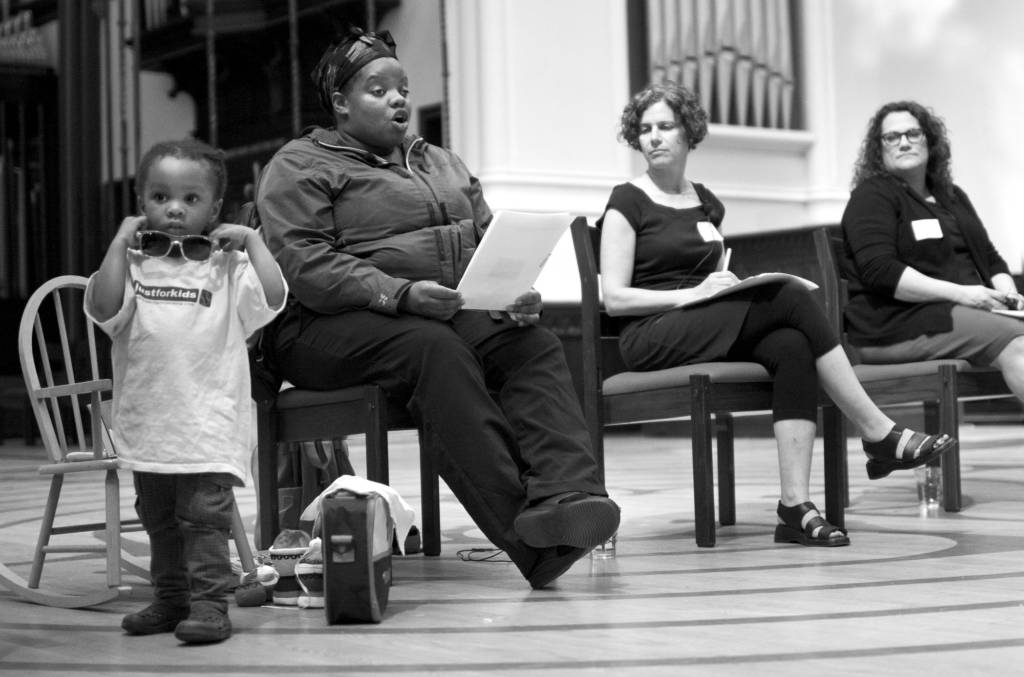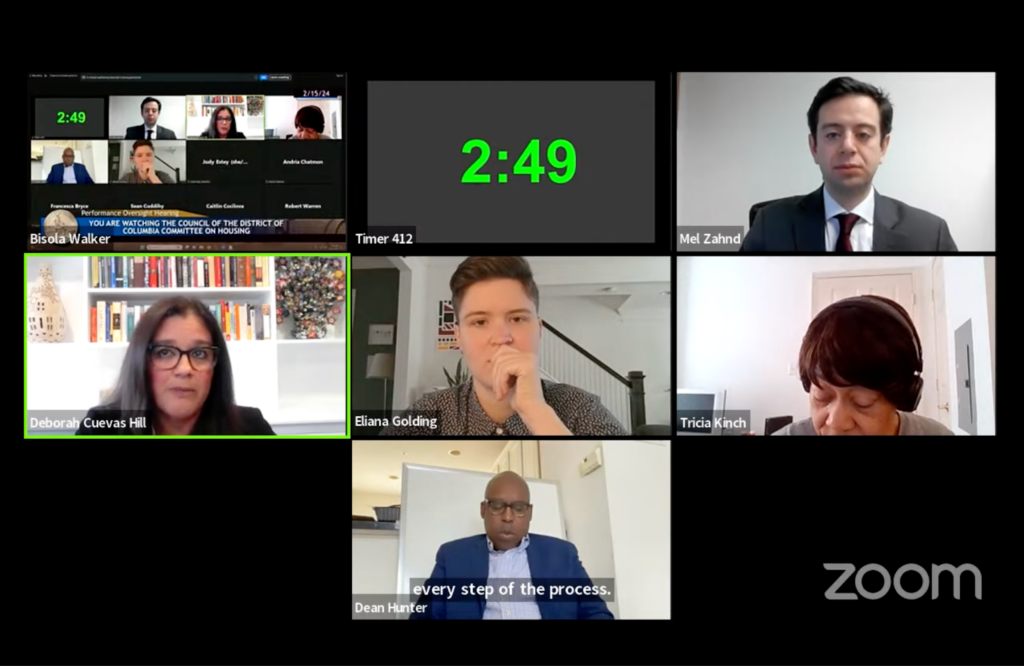Homelessness among families in the District has surged. Since 2010, family homelessness throughout the city has risen 50 percent. Nationally, homeless families comprise one-third of the total U.S. homeless population.
In response to this growing epidemic, Street Sense hosted a panel on Family Homelessness in the District as a part of its ongoing Lessons of Hope series on Tuesday, April 21 at the Church of the Epiphany. At-Large Councilmember Elissa Silverman gave opening remarks and joined the audience.
[Disclosure: Street Sense Media rents office space from the Church of the Epiphany]
The panel opened with the heart-wrenching story of 30-year-old Sasha Williams, a Street Sense vendor who left her mother’s home and sought emergency shelter after being sexually assaulted 12 years earlier. Currently, she and her 2-year-old daughter, Eboni, live at DC General, the largest family shelter in the District.
“One representative said that I should sleep on a bus. We need better opportunities, better resources and we have to know our rights,” Williams said.
The panel, moderated by Washington City Paper reporter Aaron Weiner, also included Martha Beresin of the Washington Legal Clinic and Mary Cunningham of the Urban Institute.
Cunningham delved into what she believes to be the greatest catalyst behind family homelessness. “Largely, family homelessness is driven by lack of affordable housing and low incomes. Either increase people’s incomes or subsidize housing.”
Families may experience homelessness for any number of reasons, including lack of affordable housing, domestic violence, mental disabilities, fractured social supports, unfinished education and lack of employment opportunities.
“We have to stop looking at this as an individual problem, when it’s systemic,” Beresin said. “There’s been a shift away from long term to short term subsidies. So with rapid rehousing, families are guaranteed four months of housing, but with minimum wage, families aren’t able to get their incomes up, and they end up back in our very expensive shelter system.”
This past hypothermia season, beginning on November 1, 2014 and ending on March 31, 2015, the District was left with an overflow of families seeking shelter. In response to the growing crisis, the city took to renting out motel rooms, some of them in Maryland. As of April 22, 50 families remained in motel rooms, according to the Department of Human Services.
“They only shelter them in the winter. Then for six, or seven months they’re homeless. That’s traumatic for families, especially children, staying post to post, laundromat to emergency room,” Beresin said. “When it comes to children, the needs are much higher and much costlier to meet.”
Many families with a member who is working, don’t earn adequate wages. Food stamps and most other government subsidies do not cover the cost of transportation and other necessities like toilet paper and cleaning supplies, according to Beresin.
Additionally, The National Center On Family Homelessness projects that some 5.8 million units are needed nationally to fill the gap in affordable housing for low-income households.
According to the budget proposed by Mayor Bowser, $2.5 million will fund “additional family homeless prevention,” and 80 units of rapid re-housing for families, another $1.2 million will create 110 permanent housing units for families.
The plan also includes funds to begin closing DC General family shelter and replacing it with smaller facilities dispersed throughout the District.
“Veteran and single adult homelessness went down because the government directed resources towards it; the same can be done with family homelessness,” Cunningham said. “Read the D.C. budget and support it. Be vocal about it.”
When the panel opened up to the audience, Reggie Black, a Street Sense vendor, brought the New Communities Initiative (NCI) before the forum to collect their thoughts. NCI, a District initiative that aims to redevelop low-income, subsidized public housing into mixed-income communities has been in the works for over a decade. Some of the communities targeted include Barry Farm, Richardson Dwelling, Northwest One and Park Morton.
“Personally, I think the intentions of the program were good, but the trouble was in the execution,” Weiner responded. “In the short term we see this loss of affordable housing, but in the long term the plan is that we’ll end up with the same number we started with.”
NCI is based on the premise that there would be “one for one” replacement of existing affordable housing units with new ones. However, those numbers were never achieved. In an April Washington City Paper column, Weiner wrote that the Lincoln Heights redevelopment was supposed to be completed this year, however, at the beginning of 2014, only 32 of the 440 Lincoln Heights families had been moved into new housing.
“The number [of affordable units] is a lot less now than it was 20 years ago, though,” Street Sense’s Executive Director Brian Carome said. “We need to remember that more public housing was torn down during the presidency of Bill Clinton than any other President in U.S. history and there should be a bipartisan approach to public housing, on the national level as well as the local level.”








